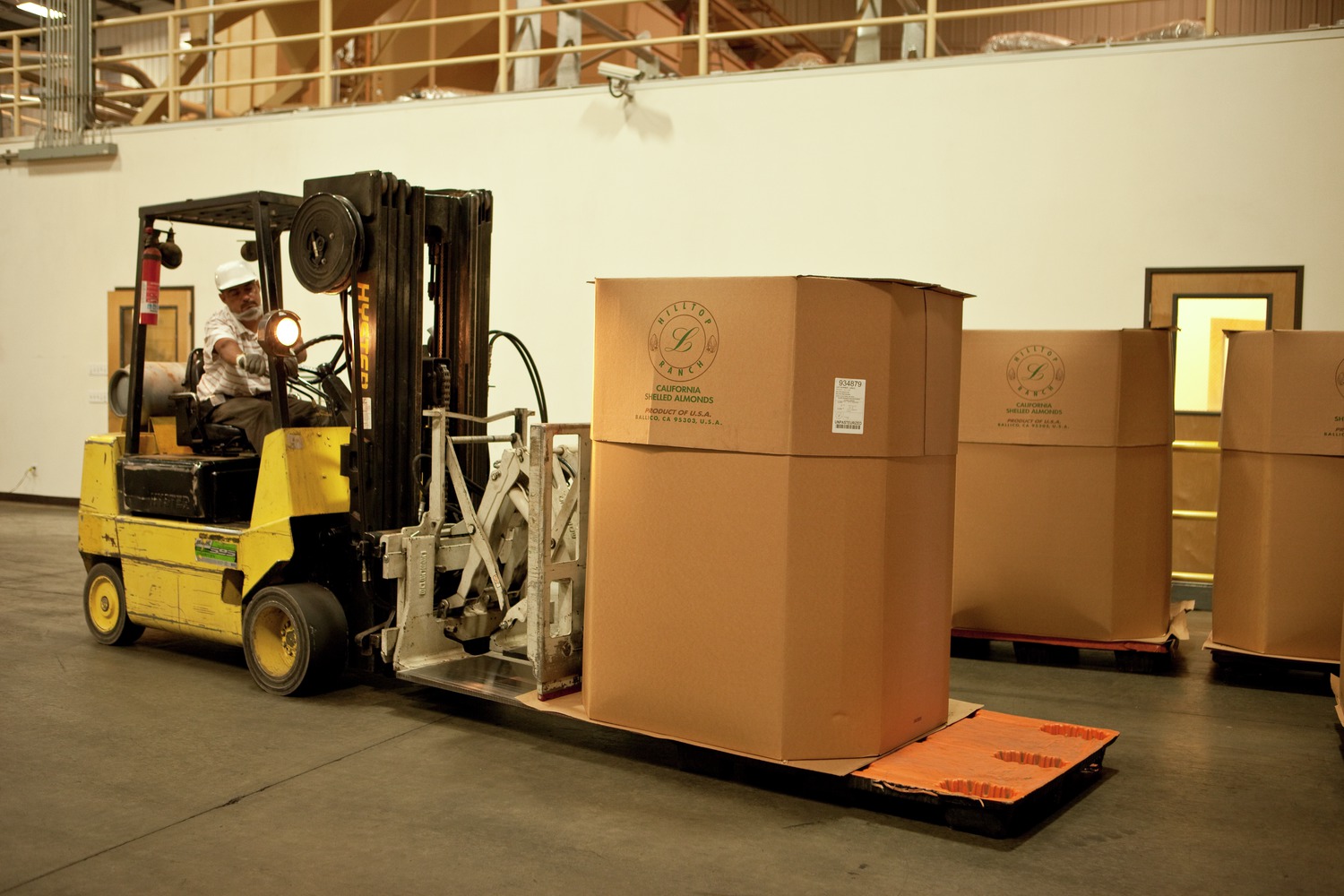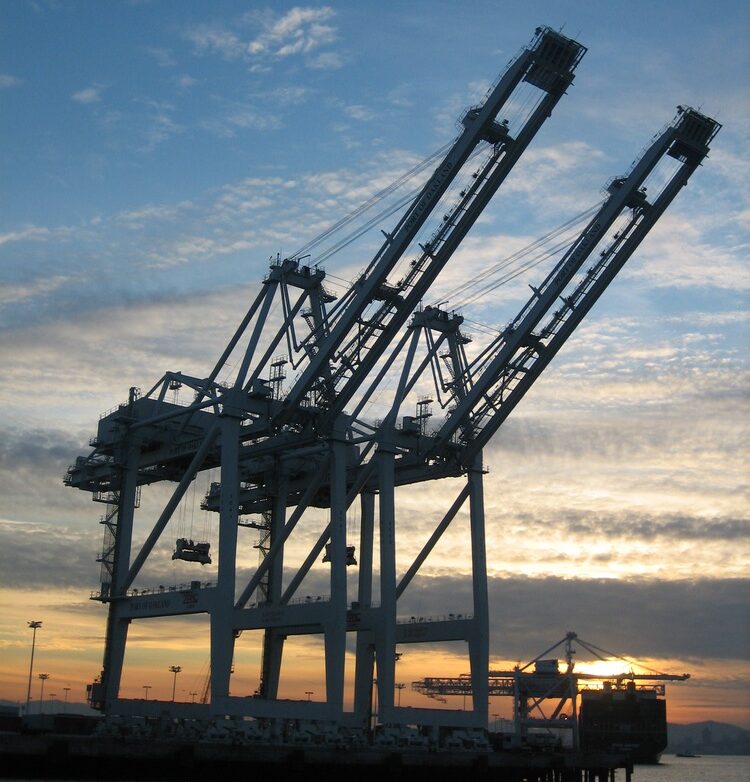
After harvest, almonds travel a long and twisted route before they meet their end consumer, who may be enjoying a candy bar in Switzerland, or baklava served at an Algerian wedding, or tea-flavored almond milk in Japan.
Almonds travel to destinations in more than 100 countries around the world, and along their winding route, they encounter many hurdles and barriers: difficult inspection procedures, varied food safety regulations, excessive tariffs and bureaucratic red tape.
“While most shipments make it to their customers overseas with no disruptions, some consignments get held up in foreign ports for a myriad of reasons,” said Geoffrey Bogart, principal specialist for Global Technical and Regulatory Affairs at the Almond Board.
Fortunately for the California almond industry, skilled U.S. trade officials team up daily with Almond Board of California (ABC) staff, such as Bogart, and others to ensure almonds make it to their destination as seamlessly as possible.
“Key to ABC’s ability to address global regulatory issues in real time is the support provided by the U.S. Department of Agriculture’s Foreign Agricultural Service (FAS) officers and local staff,” said Bogart.
During The Almond Conference 2020 last December, four FAS officials from around the world joined a panel to discuss their work to address trade barriers and grow foreign markets for almonds and almond products.
Navigating Complexities in the E.U.
One of the most complex, important markets discussed was the European Union (E.U.), where exports of California almonds were worth roughly $1.25 billion in 2019.
Agricultural Minister-Counselor with FAS’s U.S. Mission office in Brussels, Belgium, Bruce Zanin, described E.U. food safety rules as “extremely strict” and enforced through a complex system where the central E.U. authority sets the rules, but those rules are sometimes enforced differently depending on the interpretation of many different national governments.
The situation was particularly challenging in 2017 and 2018, when unusual weather conditions in California led to higher aflatoxin levels in almonds. This triggered increased inspections and costs. When this occurred, Zanin said FAS and ABC engaged closely to preserve the industry’s Pre-Export Check (PEC) program.
“We were able to stave off the member states so that when weather conditions improved, and aflatoxin [levels] went down, inspections went down,” Zanin said.
“I hope it is clear to you all that export success in the E.U. regulatory realm, which is minimizing disruption of shipments and keeping down your transaction costs, comes from a close partnership between FAS Brussels, the other FAS offices in Europe and ABC,” Zanin said. “Because of the hard work of the California almond industry and ABC, the excellent quality of California almonds is unassailable. In fact, the trade issues faced by California almonds are much less than other U.S. agricultural products.
“You’re doing great, despite the E.U.’s complicated system.”

Addressing Challenges in India
With India’s huge market for California almonds come significant technical barriers to trade, according to Jeanne Bailey, who was formerly FAS minister counselor in New Delhi. Today, she is deputy administrator for FAS Trade Policy and Geographic Affairs in Washington, D.C.
For example, India continues to consider a high number of chip-and-scratch to be a food safety issue rather than a grading issue, despite significant evidence to the contrary. To address this, FAS and ABC have been working with India’s Food Safety Standards Authority and providing education and data. While the issue is not yet resolved, Bailey said the constant engagement has helped keep the matter from worsening.
She pointed to a successful example of engagement in 2020 when FAS and ABC teamed up to address an issue with port officials assessing the value of almond shipments based on outdated data. By intervening quickly and providing reliable data on more current values, FAS was able to persuade port officials to adjust the valuations downward.
“While these issues pop up suddenly, unfortunately it often takes months and sometimes even years to address them,” Bailey said. “But one of the things I so admire about ABC is that they are there for the long run. Through their superlative trade servicing efforts and building of relationships, combined with working with the FAS Offices of Agricultural Affairs around the globe, they are able to have those conversations and help foreign officials better understand our grading system, the top quality of our producers and the top quality of our food safety.”
Opportunity for Growth in Japan
Japan, among the top markets for almonds, usually purchases between 75 million to 100 million pounds of almonds annually, worth between $225 and $325 million. Despite a slightly shrinking population, consumption in this country has increased over the past two decades.
“For almonds, there are prospects for continued growth, due in large part to increasing diversification of how people consume almonds,” said Morgan Perkins, agricultural minister-counselor with the FAS Tokyo office.
“In particular, almond milk [consumption] has been growing very quickly in recent years, and there’s strong potential for continued growth due to messaging on the health and beauty benefits of consuming almonds,” said Perkins.
Though the U.S. enjoys a 97% share of the Japanese market, it is not without challenges. Japan has incredibly low tolerances for aflatoxin, so any detection above the tolerance level of 10 parts per billion leads to an outright rejection of shipments, with no in-market remediation. This, combined with Japan’s policy of testing 100% of shipments, increases costs and risk for exporters.
But there have also been recent successes. Under the U.S. Japan Trade Agreement, which went into effect on January 1, 2020, tariffs were eliminated for kernel, inshell and roasted almond exports to Japan. Previously, there was a 4% tariff on kernel/inshell almonds and 5% on roasted almonds.
The agreement will also gradually eliminate tariffs on almond flour and almond milk over the next three to eight years.
Algeria: Market Again Open
In July 2020, the Algerian market was officially closed to almond imports. Prior to market closure, Algeria had been a small but growing market for California almonds. Handlers reported shipments of almost 10 million pounds in CY 19-20, which was an increase of 29% from the previous year.
With the unexpected announcement, ABC worked with the Embassy in Algiers to assist several handlers with consignments “on the seas” or in the port that had been impacted by the closure. ABC provided almond export data to the Embassy to support the call for market re-opening. USDA and the U.S. Trade Representative also reached out to Algerian authorities to call for reopening.
These efforts eventually led to the government’s reconsideration of the almond ban and the recent announcement of re-opening, but with restrictions: California almond imports will be restricted during almond harvest time in Algeria (June 1 to August 31).
With the Algerian market back on line, Morocco close to breaching 30 million pounds, and the Egyptian market on an 8% growth spurt, North Africa as a region holds great promise as an emerging market for California almond shipments.
Industry members are invited to watch the entire panel discussion among FAS staff at Almonds.com/Conference.











